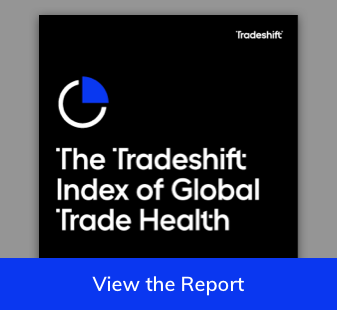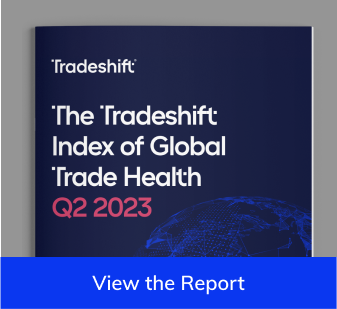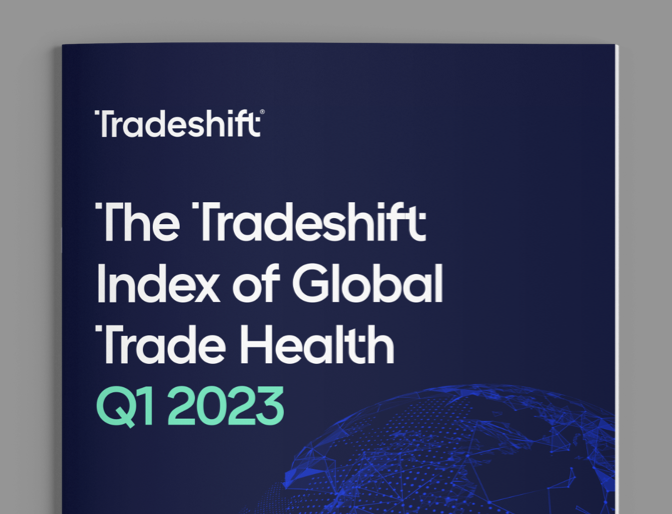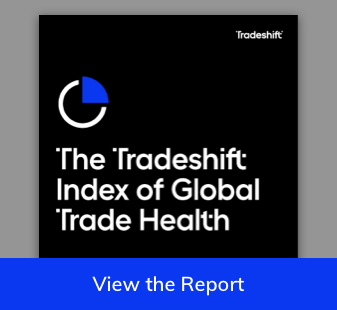The Tradeshift Index of
Global Trade Health Q1 2024
Q1 2024 report
Can we now – albeit with caution – look forward to a brighter 2024?
After the end of Q4 in 2023 indicated a positive upswing for global trade, does the continuation of this trend in Q1 2024 confirm a positive trajectory for this year? Global trade activity reaching the highest level in five quarters, with especially strong growth in China and the US, could hint at a potential answer…
Recovery is beginning to blossom still in the face of volatility
Q4 2023’s positive trend continued into the new year, with global trade activity landing 3 points below the expected range, and order surges tracking 1 point above the expected range. Momentum is building, especially when looking through the lens of China and the US’s growth – and even the Eurozone’s improvements, through the many obstacles of market conditions and weakened demand.
However, making solid predictions about recovery is still out of reach. Tradeshift’s CEO, James Stirk, reminds us of the crucial reality: “Every recovery is fragile and external factors like the ongoing Red Sea crisis, disrupting supply chains, pose a threat.”
Not only could this reignite inflation, threatening recovery, but even the actuality of fresh demand and growth could prove a challenge to businesses with low liquidity reeling from 2023.
Perspectives on the road ahead
Trade finds a way
Technology is helping businesses chart a path through a complex macroeconomic environment.
War in Ukraine, snarled supply chains, geopolitical tension, and a trade war between the world’s two largest economies. The macroeconomic landscape has changed very little over the past two years. But businesses are learning to adapt and even thrive in this era of volatility and technology is helping them get there.
While the backdrop remains fraught with uncertainty and complexity, the metamorphosis underway in global supply chains is unmistakable. Technologies like generative AI promise to take this to another level entirely. Adaptation, resilience, and digitalization are not just buzzwords but imperatives for survival and sustainable growth.
Purpose and Methodology behind the Tradeshift Index of Global Trade Health
Understanding the Index
Tradeshift’s Index of Global Trade Health analyzes anonymized B2B transaction volumes on its platform, offering timely perspectives on how external events are impacting global commerce.
By acknowledging the complexity of global supply chains, the report serves as a valuable snapshot, complemented by third-party data and expert insights.
The methodology
The Index compares B2B transaction volumes against a baseline – one which is created by analyzing medium-term seasonal trends in the transaction data that flows across our platform – providing insights into sectoral and geographical volatility.
While small revisions may occur to enhance accuracy, the Index aims to offer an extensive understanding of global trade dynamics.
About Tradeshift: Redefining business commerce
Tradeshift is a leading business commerce platform, revolutionizing how buyers and suppliers connect, transact, and grow.
With expertise in e-invoicing, AP automation, and innovative B2B marketplaces, Tradeshift fosters economic opportunities worldwide.
The platform hosts a rapidly growing community of buyers and sellers in over 190 countries.
Past Reports
Q1 2021
Trade chasm: Has the Pandemic brought buyers and sellers closer together or pushed them further apart?
Other Links
As Trade Volume Increases, Survey Indicates that U.S. Suppliers Are Cautiously Optimistic
Will COVID Bring Buyers and Their Sellers Closer?
The Post-Pandemic Supply Chain: Looking Back to Move Ahead



